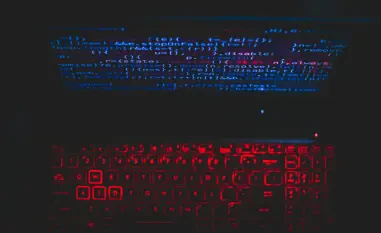Setting the Stage: A Digital Disruption Shaking the Industry
In a landscape where digital innovation drives automotive manufacturing, the recent cyberattack on Jaguar Land Rover (JLR), the UK’s largest car manufacturer and a subsidiary of Tata Motors, has sent shockwaves through the market, exposing critical vulnerabilities. With production halted across major plants in Solihull, Halewood, and Wolverhampton since early this year, the company faces an unprecedented standstill, costing an estimated £120 million ($161.9 million) in lost profits and £1.7 billion ($2.29 billion) in revenue. This incident not only highlights weaknesses in a vital sector but also raises urgent questions about the industry’s readiness to combat escalating cyber threats.
The significance of this crisis extends beyond a single company, reflecting broader market concerns around cybersecurity, supply chain stability, and economic impact. As automotive firms increasingly rely on interconnected systems for production and logistics, the risk of digital breaches looms larger than ever. This analysis aims to dissect the market trends surrounding cyber risks in manufacturing, evaluate the financial and operational fallout for JLR and its ecosystem, and project future implications for stakeholders across the sector. The goal is to provide actionable insights into navigating this turbulent terrain.
Market Dynamics: Unpacking Trends and Projections in Automotive Cybersecurity
Financial Impact: Quantifying the Cost of Cyber Downtime
The immediate financial toll on JLR underscores a troubling trend in the automotive market: the staggering cost of cyber-induced disruptions. The reported losses of £1.7 billion in revenue highlight how a single breach can derail production targets, delay customer deliveries, and shake investor confidence. Market analysts note that these figures are particularly alarming given the industry’s ongoing recovery from global supply chain bottlenecks and material shortages, amplifying the urgency for firms to allocate resources toward robust digital defenses.
Beyond the headline numbers, the broader market faces a ripple effect as companies reassess their exposure to similar risks. Smaller players, lacking the capital to absorb such losses, may struggle even more, potentially leading to consolidations or closures. Projections suggest that by 2027, the global cost of cybercrime to the automotive sector could exceed billion annually if current vulnerabilities persist, pushing firms to prioritize cybersecurity investments over other operational needs.
Supply Chain Vulnerabilities: A Systemic Risk Exposed
Another critical market trend illuminated by JLR’s situation is the fragility of interconnected supply chains. With around 200,000 workers tied to JLR’s network of suppliers, the production halt threatens the survival of many dependent firms, raising the specter of layoffs and bankruptcies. This dynamic reflects a wider industry challenge: the concentration of risk in key manufacturers, where a disruption at one node can cascade across the entire ecosystem.
Market data indicates that over 60% of automotive suppliers rely on a handful of major clients like JLR for the bulk of their revenue, leaving little room for error during prolonged shutdowns. Looking ahead, analysts anticipate a shift toward diversified supplier relationships and localized production to mitigate such risks. However, implementing these changes will require significant capital and coordination, posing a hurdle for an industry already stretched thin by other pressures like electrification mandates.
Cyber Threat Evolution: A Growing Challenge for Manufacturers
The nature of the cyberattack on JLR, claimed by a group called ‘Scattered Lapsus$ Hunters,’ points to an escalating trend of sophisticated digital threats targeting critical industries. Reports suggest the breach may have exploited a known vulnerability in SAP NetWeaver software, highlighting a market-wide gap in timely software updates and employee training. Cybersecurity assessments reveal that human error remains a primary entry point for attackers, often through phishing or inadequate security protocols.
Future projections paint a concerning picture, with AI-driven malware and attacks on connected vehicles expected to become more prevalent. Industry forecasts estimate that by 2027, over 70% of automotive manufacturers will face at least one significant cyber incident annually unless proactive measures are adopted. This trend is driving demand for advanced solutions like real-time threat detection and blockchain-based supply chain security, though the cost of implementation remains a barrier for many firms.
Regulatory and Investment Shifts: Shaping the Market Response
On the regulatory front, the JLR crisis is likely to accelerate calls for stricter cybersecurity standards across the automotive sector. Governments and industry bodies are beginning to recognize the economic stakes, with discussions underway in the UK to provide support mechanisms like furlough programs for affected workers. Market observers predict that within the next two years, mandatory compliance frameworks could emerge, requiring manufacturers to demonstrate robust digital defenses as a condition of operation.
Investment patterns are also shifting, with venture capital flowing into cybersecurity startups catering to industrial applications. Data shows a 40% increase in funding for such technologies this year compared to the last, signaling strong market confidence in the need for innovation. For established players like JLR, the challenge will be integrating these solutions without disrupting existing workflows, a balancing act that could define competitive advantage in the coming years.
Reflecting on the Fallout: Strategic Insights for the Road Ahead
Looking back on the analysis, the cyberattack that halted JLR’s production revealed critical vulnerabilities in the automotive market, from financial hemorrhaging to supply chain disruptions. The incident underscored the urgent need for layered security approaches and exposed systemic risks that had long been underestimated. It also highlighted a market in transition, grappling with the dual demands of technological advancement and digital protection.
For industry stakeholders, the path forward involves several actionable strategies. Companies need to conduct comprehensive supply chain risk assessments and adopt Zero Trust security models to limit attacker access. Collaborative efforts with government and peers to share threat intelligence become essential, as do sustained investments in employee training to address human vulnerabilities. These steps, while resource-intensive, offer a blueprint for resilience in an era of escalating cyber risks. Ultimately, the crisis serves as a catalyst for rethinking how the sector balances innovation with security, paving the way for a more fortified future.













